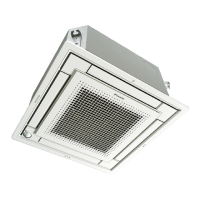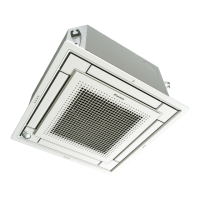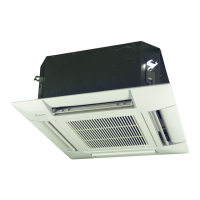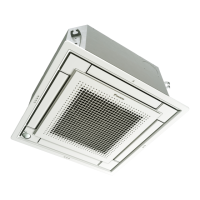Do you have a question about the Daikin FXZQ-MVE and is the answer not in the manual?
Table showing indoor unit capacity indices for different models.
Table showing indoor unit capacity indices for different models.
Explanation of the model naming convention for indoor units.
Explanation of the model naming convention for outdoor units.
Details the VRV II's reluctance brushless DC compressor technology for efficiency.
Explains the Sine Wave DC inverter for smoother motor rotation.
Highlights the efficiency improvements from using a DC fan motor.
Describes features for low noise and improved airflow.
Explains the e-Bridge circuit for better energy efficiency.
Details the e-Pass heat exchanger for efficient heat exchange.
Explains the i-Demand function for power consumption monitoring.
Describes a compact design for noise and power savings.
Focuses on features that enhance user comfort.
Highlights features contributing to energy efficiency.
Focuses on features that ensure system reliability.
Highlights environmentally friendly aspects of the system.
Focuses on design aspects for ease of installation and flexibility.
Focuses on ease and speed of installation.
Guides on selecting VRV II systems based on cooling load.
Explains how to correct capacity based on piping and conditions.
Explains the REFNET piping system.
Guides on selecting REFNET piping components.
Table showing indoor unit capacity indices for different models.
Table showing indoor unit capacity indices for different models.
Explanation of the model naming convention for indoor units.
Explanation of the model naming convention for outdoor units.
Details the VRV II's reluctance brushless DC compressor technology for efficiency.
Explains the Sine Wave DC inverter for smoother motor rotation.
Highlights the efficiency improvements from using a DC fan motor.
Describes features for low noise and improved airflow.
Explains the e-Bridge circuit for better energy efficiency.
Details the e-Pass heat exchanger for efficient heat exchange.
Explains the i-Demand function for power consumption monitoring.
Describes a compact design for noise and power savings.
Focuses on features that enhance user comfort.
Highlights features contributing to energy efficiency.
Focuses on features that ensure system reliability.
Highlights environmentally friendly aspects of the system.
Focuses on design aspects for ease of installation and flexibility.
Focuses on ease and speed of installation.
Guides on selecting VRV II systems based on cooling load.
Explains how to correct capacity based on piping and conditions.
Explains the REFNET piping system.
Guides on selecting REFNET piping components.
| Model | FXZQ-MVE |
|---|---|
| Cooling Capacity | Various, depending on the specific model |
| Heating Capacity | Various, depending on the specific model |
| Energy Efficiency Ratio (EER) | Varies with model |
| Seasonal Energy Efficiency Ratio (SEER) | Varies with model |
| Refrigerant | R410A |
| Airflow Rate | Varies with model |
| Noise Level (Indoor Unit) | Varies with model |
| Noise Level (Outdoor Unit) | Varies with model |
| Dimensions (Indoor Unit) | Varies with model |
| Dimensions (Outdoor Unit) | Varies depending on the outdoor unit paired with the indoor unit. Consult product documentation for specific dimensions. |
| Weight (Indoor Unit) | Varies with model |
| Weight (Outdoor Unit) | Varies depending on the outdoor unit paired with the indoor unit. Consult product documentation for specific weights. |
| Power Supply | 220-240 V, 50 Hz |











